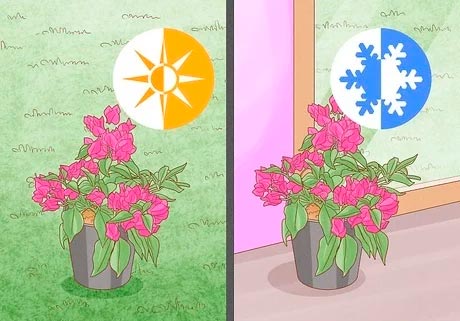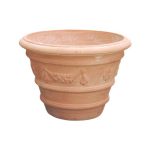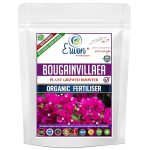Care & Maintenance of Bougainvillea
Bougainvillea is a stunning tropical vine known for its vibrant and colourful bracts, often mistaken for flowers. Native to South America, this hardy plant is celebrated for its resilience and ability to thrive in warm climates. However, bougainvillea are adaptable to pots and make beautiful house plants.
In this section, you’ll find everything you need to know about planting, growing, and maintaining bougainvilleas. From watering and soil requirements to pruning techniques and pest control, our comprehensive guides will help you keep your bougainvillea healthy and beautiful. Whether you’re looking to create a lush hedge or simply add a splash of color to your garden, we’re here to support you every step of the way.
When & Where to Plant?
Bougainvilleas are best planted in the spring or early summer when the danger of frost has passed and the soil has warmed up. This to allow its roots to become established before cooler weather sets in.These plants require frost-free conditions, making it possible to grow them outdoors in the UK only during the summer months. With the right conditions, they can produce multiple cycles of blooms over several months.

This timing allows the plant to establish itself during the growing season, promoting healthy growth and blooming. In regions with mild winters, such as the southern parts of the UK, planting can also be done in the early autumn, giving the plant time to settle before the cooler months.
Where to Plant?
Location:
Bougainvillea’s health and blooming are directly influenced by the amount of sunlight it receives. Ideally, the plant should get at least 6 hours of full sunlight each day. Bougainvillea can be planted outdoors during summer in the UK or a heated greenhouse.Plant your bougainvillea in a spot that offers some protection from the wind, as harsh winds can break its branches.
Prepare the Planting Bed:
Plant your bougainvillea in well-draining soil to avoid root rot from stagnant water. Ideal soil is sandy or loamy with a slightly acidic pH level between 5.5 and 6.0. Soil that is too alkaline can lead to chlorosis, resulting in pale leaves. To ensure proper drainage, consider planting on raised beds or slopes.
They can grow quite large, therefore, ensure there is enough space for the plant to grow and spread without becoming crowded. Due to their sharp thorns, position your plant several feet away from walkways or high-activity areas. Prepare the soil by loosening it to a depth of 12-20 inches and incorporating compost or other organic matter to improve both soil fertility and drainage.
Root ball Care:
Lightly water the bougainvillea and carefully remove it from its original pot. Gently loosen the root ball to help the roots spread out in their new setting. Place the bougainvillea into the hole without disturbing the roots. After positioning the plant, fill the hole with soil and gently pack it around the root ball to eliminate air pockets.
Water the plant deeply to ensure the soil settles and the roots begin to establish themselves. Apply a layer of mulch around the base to retain moisture and reduce weed growth.

Planting Climbers:
If you’re growing bougainvillea as a vine, secure the plant to a support structure using plant ties or soft fabric strips. For climbing on a trellis or wall, plant the bougainvillea close to the structure from the start to encourage it to grow onto it more easily.
Growing Bougainvillea in Containers
Bougainvilleas can tolerate being slightly rootbound in their pots, but if roots are emerging from the bottom, it’s time to repot. Select a pot that is about 1 inch (2.5 cm) wider than the current one, ensuring it has drainage holes. Water the plant and gently ease it out of the pot to avoid disturbing the delicate roots. Place the bougainvillea in the new pot and fill in around the roots to complete the repotting process.Although Bougainvilleas are often sold in small pots, these are usually not large enough, so repotting into a bigger container is advisable. Allow the plant to acclimate to its new pot for a few weeks before making any further transplanting.

Soil
Use a good quality, peat-free multi-purpose potting compost. too much peat retains moisture and may result in root rot. The potting mix needs to be rich with excellent drainage. You want your bougainvillea to take the moisture it needs and drain all excess.
Choose the Right Container
Bougainvilleas are hardy plants with sensitive root systems and do not like being transplanted frequently.
Choose a pot that will accommodate the plant for several years. The type and size of the bougainvillea, as well as the current pot size, will determine the size of the decorative pot you’ll need.

Once established, Bougainvilleas grow rapidly, so provide plenty of space for expansion.
Select a deep container with a height of at least 30 cm. Ensure the planter has drainage holes to prevent waterlogging.
Terracotta pots are breathable, allowing air and moisture to pass through the walls, which helps prevent root rot. They are also heavy, providing stability for larger plants.
If you want your bougainvillea to climb, using a trellis for support is a good idea.
Partially fill the container with compost, placing the plant so that the top of the compost is a few centimetres below the rim of the new pot. When adding compost around the roots, firm it very gently. Water thoroughly to settle the compost, and add more if needed to cover any exposed part of the root ball.
Watering Bougainvillea
• The watering schedule is crucial for the success of bougainvilleas.
• This plant prefers dry conditions, so water it deeply every three to four weeks rather than frequently. Overwatering can cause immediate and premature bloom drop.
• In spring, increase watering to twice or three times a week, depending on the temperature. It’s best to water thoroughly and then let the plant almost dry out before watering again. In autumn, reduce the frequency of watering as growth slows.
• During winter, only occasional watering is needed, usually about once a fortnight. Always check the moisture level of the compost to ensure it’s not too damp or too dry.
Feeding Bougainvillea
• Bougainvillea benefits from occasional feeding to encourage healthy growth and abundant flowering, but regular fertilizing is not essential.
• If you decide to feed your bougainvillea, you can use a water-soluble fertilizer at half strength every 7 to 14 days or apply a slow-release fertilizer in spring and midsummer.
• Always apply to moist soil to avoid root damage.To prevent fertiliser burn, water your bougainvillea thoroughly after applying any fertilizer. This dilutes the concentration and prevents nutrient overload.
• It doesn’t need feeding in the winter when its growth naturally slows.
Pruning
Pruning bougainvillea is essential for maintaining its shape, promoting healthy growth, and encouraging abundant flowering.

• The first pruning of the year should be done immediately after overwintering, before the bougainvillea has sprouted. Light pruning throughout the year can increase flowering. During the growing season, if the plant is outgrowing its space, you can lightly prune after each flush of flowers.
• Use sharp, disinfected pruning shears or scissors, and wear gloves to protect your hands from thorns.
• Remember to wipe your pruning shears with the disinfectant after pruning diseased branches before pruning healthy branches to prevent disease from spreading.
• In early spring, cut down last year’s leaves and shoots to encourage the bougainvillea to continue branching. Avoid cutting entire branches; always leave about a third of their length. The vibrant flowers of bougainvillea grow on new shoots, making this initial pruning crucial.
• Many bougainvilleas are trained to climb a trellis or spread along a fence. While pruning, gently wrap new shoots around the structure to guide their growth in the desired direction. 
• Bougainvillea shrubs are versatile and can be pruned into various shapes. If you’re growing yours in a pot, you can even shape it into a small tree.
• During the summer, trim shoots with withered and dried bracts sporadically to allow new branches to grow, which can extend the flowering period into autumn.
• In addition to regular pruning, perform what is known as pinch pruning. To do this, use your fingers to pinch off the tops of the faded blooms and then pinch back to the nearest branch. This technique promotes new growth and encourages the development of fresh blooms.
• In autumn, perform a final pruning to prepare the plant for winter. Trim the bougainvillea more compactly so it doesn’t take up too much space in its winter location.
Caring for Your Bougainvillea During Winter
Bougainvillea is hardy in zones 9 to 11 and can tolerate a light freeze, though severe cold will kill its roots. In regions outside these zones, such as the UK, bougainvillea should be kept in containers and moved indoors during winter. Proper winter care and preparation are essential to ensure the plant remains healthy while it rests through the cold season.Protecting bougainvillea from frost in the UK during winter requires some careful planning and measures, as the plant is not naturally suited to cold climates.

• To protect your Bougainvillea, begin by applying a layer of mulch about 6 cm deep in your garden beds and borders. You can use bark or decorative mulches like slate chippings or gravel. Around the base of each plant, apply grit to prevent moisture buildup and reduce the risk of root rot. This mulch layer will help keep your plants warm and insulated during cold weather, safeguarding them from frost damage.

• In an outdoor garden, you can protect plants using horticultural fleece or plastic sheeting. Ensure it is securely fastened with pegs and use enough layers to block all light from reaching the plant. If your garden is prone to severe frost, shield vulnerable shrubs and trees by covering them with sheets or blankets overnight to prevent significant damage. This is especially useful if your bougainvillea is in a pot, as it helps protect both the plant and the soil from freezing.

• To protect your bougainvillea from frost in the UK during winter, consider moving it to a sheltered spot. This can make a significant difference in safeguarding the plant from harsh conditions. A sheltered location, such as against a south-facing wall or under an overhang, can provide additional warmth and protection from cold winds.

• If your bougainvillea is in a container, consider moving it to a more protected area, like a garage or shed, during extreme cold spells. If this isn’t possible, elevate the container off the ground to reduce exposure to freezing temperatures and insulate the container as needed
Pest Control
By following preventive and targeted strategies, you can effectively manage and prevent common pests on your bougainvillea, ensuring healthy and vibrant growth.

• Start by regularly inspecting your plants for early signs of pest activity and damage.
• Maintaining plant health through proper watering, fertilizing, and pruning is crucial, as healthy plants are less susceptible to pests.
• Ensure cleanliness by removing fallen leaves, dead plant material, and other debris around your plants, eliminating potential pest habitats.
• When introducing new plants to your garden, quarantine them for a few weeks to ensure they are pest-free.
• Maintain proper spacing and air circulation around your bougainvillea to reduce pest infestations.
• To control aphids, encourage natural predators like ladybugs and lacewings and apply neem oil or insecticidal soap to affected areas. 
• Prevent slugs by using barriers such as copper tape or diatomaceous earth around the plant base and manually removing slugs during the evening or early morning.
• Combat spider mites by spraying the plant with a strong jet of water to dislodge them and applying miticides if infestations are severe.
• For scale insects, manually scrape them off with a soft brush or cloth and use horticultural oil to smother them.
• To manage thrips, place blue or yellow sticky traps near the plants to capture adults and spray insecticidal soap directly on affected areas.
• For leaf miners, prune and destroy infested leaves showing signs of trails and apply neem oil to deter adults from laying eggs.
Bougainvillea Diseases
Bougainvilleas are generally hardy and resilient plants, but they can still be susceptible to a variety of diseases and pests. Bougainvillea plants are naturally resistant to bacterial diseases and common garden pests. Typically grown for landscaping, these woody, ornamental shrubs require minimal care. However, improper gardening practices and failure to detect early signs of fungal infections can cause significant damage to bougainvilleas.
1. Mildew

Powdery mildew is a common fungal disease that affects a wide range of plants, including bougainvilleas. It is caused by several species of fungi, with Erysiphe cichoracearum being one of the most common. The disease is easily recognizable by its distinctive white, powdery coating on the leaves, stems, and sometimes flowers. This disesease can stun leaf growth and cause pre mature leaf drop.
Overwatering or poor drainage can lead to root rot, caused by fungi like Phytophthora. This disease results in wilted, yellowing leaves and can kill the plant if not addressed.
How to treat:
• Prune bougainvilleas before and after the growing season, ensuring the basal and mid-level foliage is sufficiently pruned to improve air circulation within the clustered parts of the plant.
• To reduce the chances of mildew infection, apply a fungicide when transplanting the plants, which also helps prevent root rot.
• Prune off any diseased foliage and do not use it for composting or any gardening activities.
• Ensure proper soil drainage by adding dry mulch made from wood bits to increase the soil’s draining capability.
• During damp weather, regularly check for mildew development and water the plant minimally.
Thank you for choosing our Bougainvilleas to enhance your garden! We hope you find our care and maintenance guide helpful. For any further questions or assistance, please don’t hesitate to contact us. We’re here to help you enjoy the full beauty and bloom of your hydrangeas!









